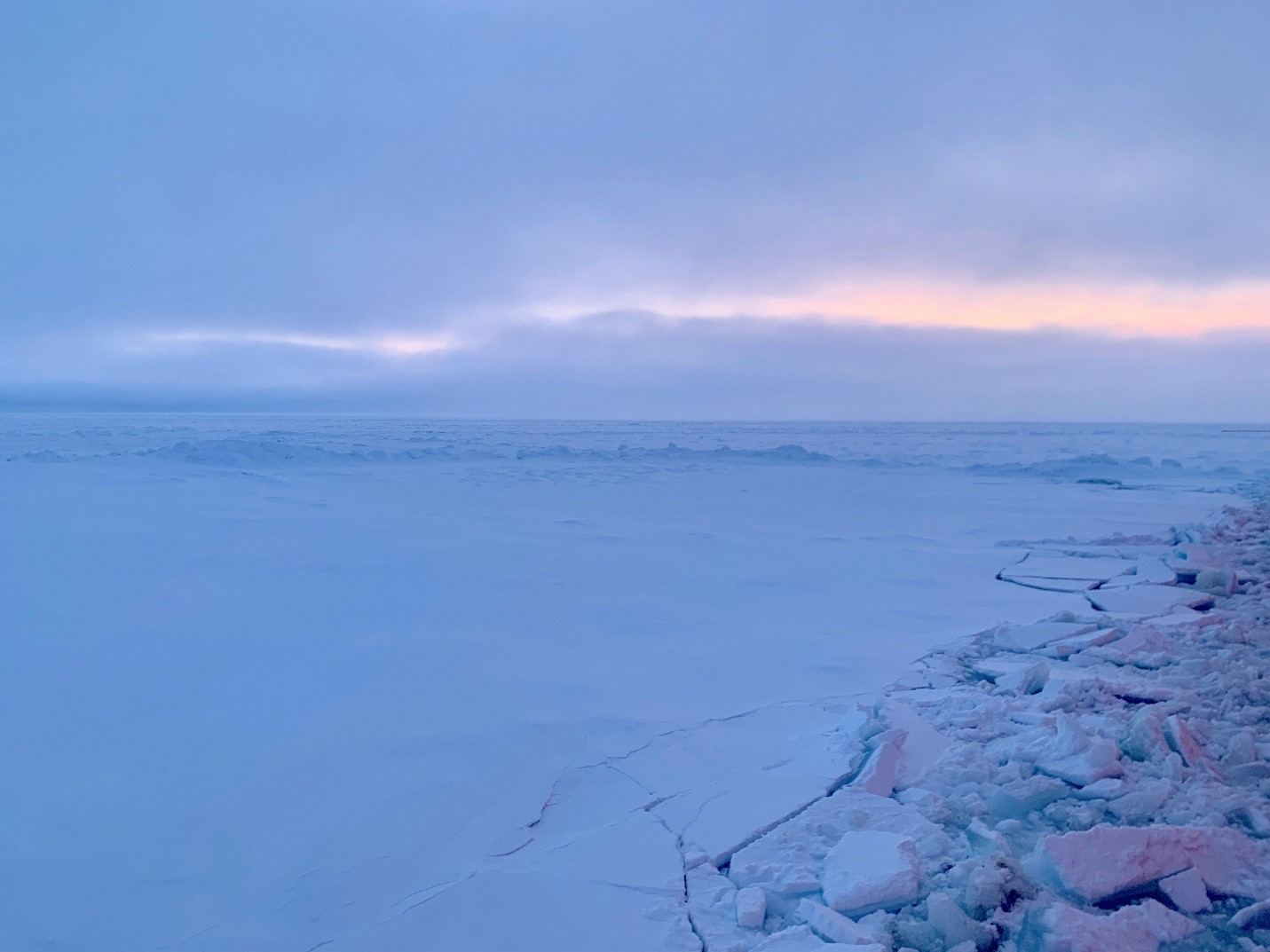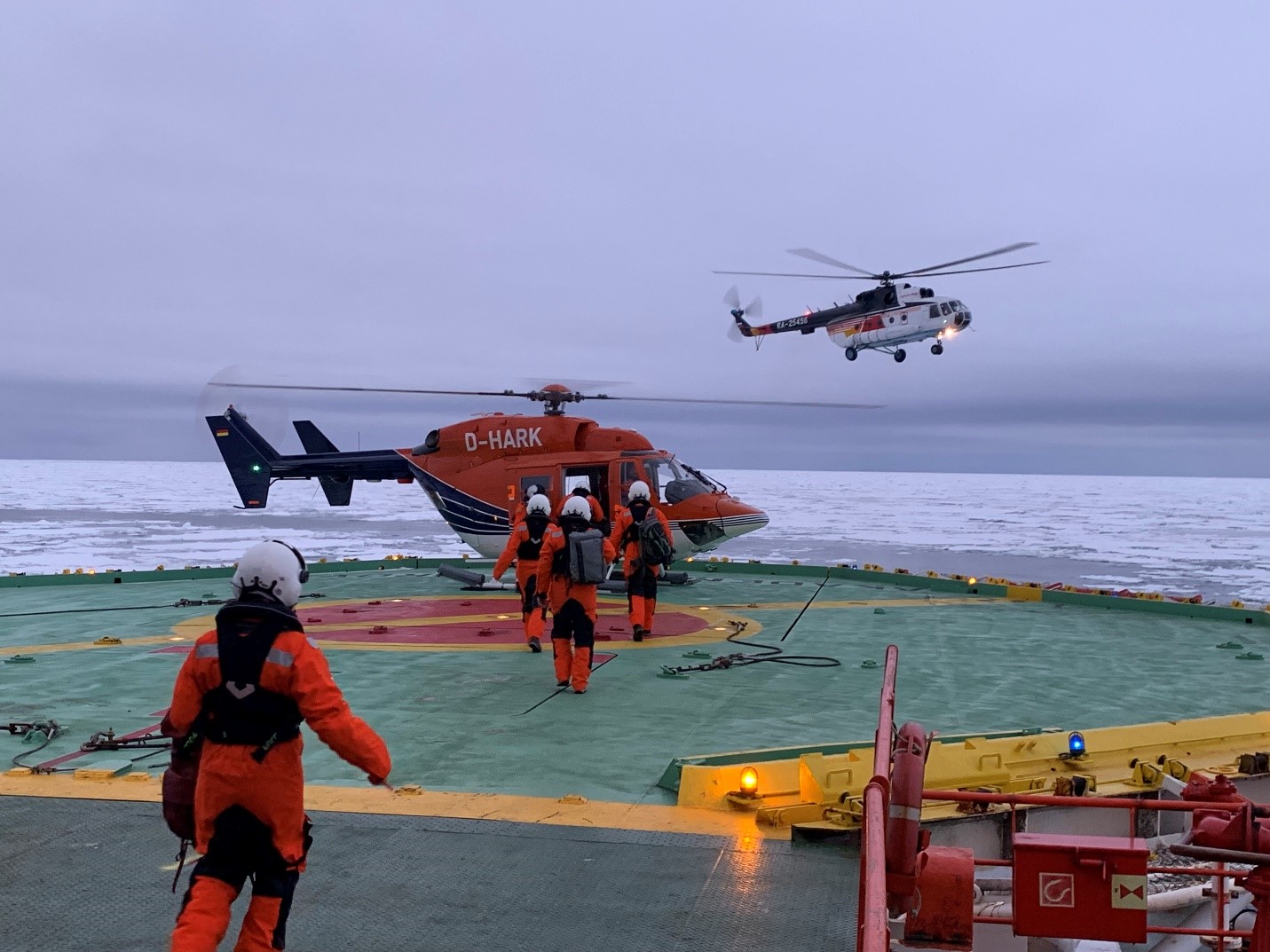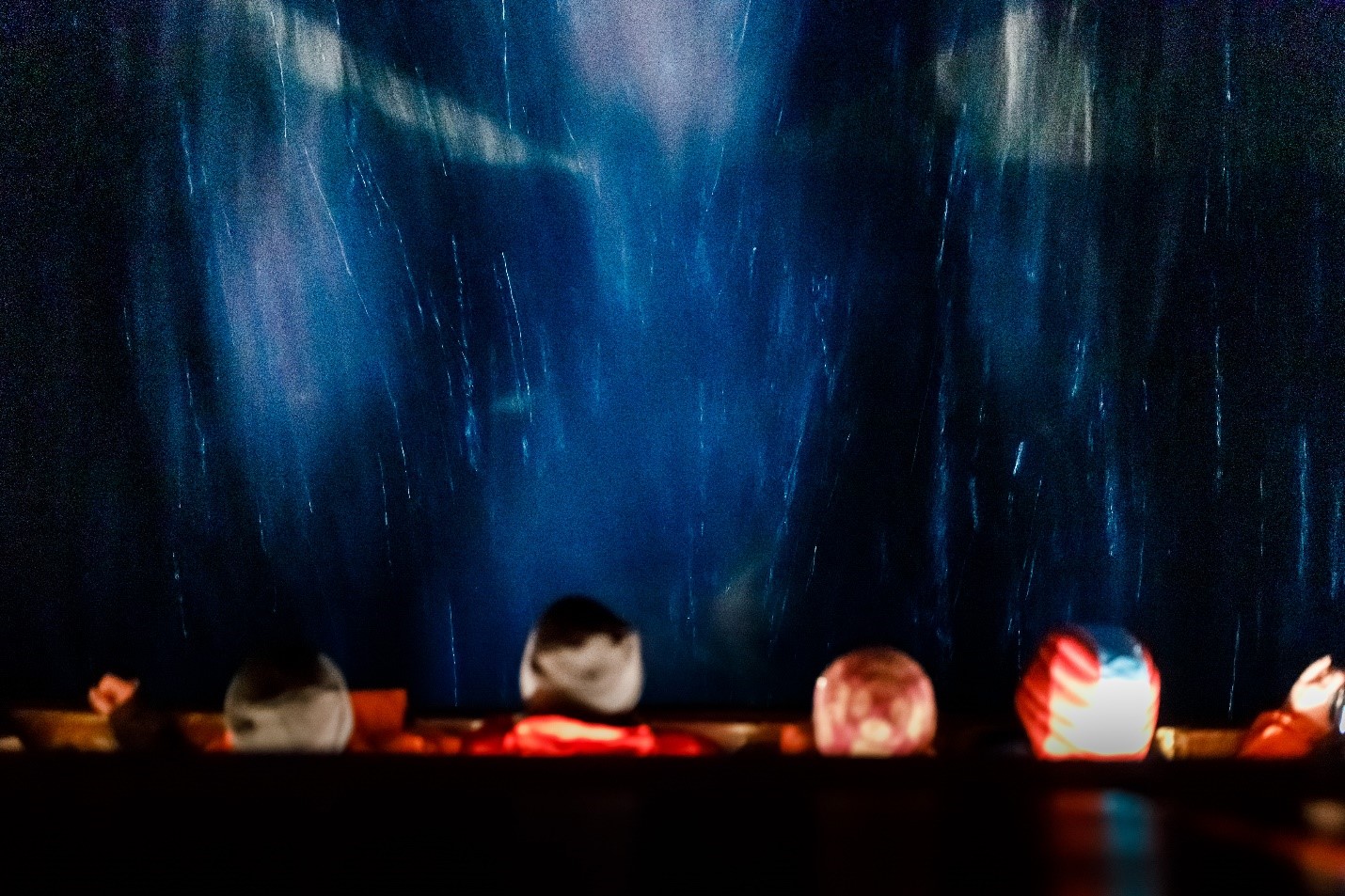MOSAiC Blog: Breaking Bad (Ice)
Published: 1 October 2019
Editor’s note: Jessie Creamean, a research scientist at Colorado State University, is traveling on the first leg of the Multidisciplinary Drifting Observatory for the Study of Arctic Climate (MOSAiC) field campaign, which started September 20, 2019. Creamean is blogging for ARM about her MOSAiC journey. All photos and captions are by Creamean except where indicated.
Ah, the beautiful, brilliant aqua blue of pristine crystals. And no, I am not referring to the color of something a certain chemist makes from a certain hit TV series based in Albuquerque … I am referring to one of the most vibrant blues I have ever set eyes on, originating from multiyear sea ice in the vast waters of the Arctic Ocean.

We have been underway after officially leaving Norway for MOSAiC over a week ago. We started at about 79 degrees north in port and are now in the sea ice at just over 85 degrees north—the High Arctic. It is currently minus 5 degrees Celsius (23 degrees Fahrenheit) outside … a bit chilly, eh? Don’t worry, it will only get colder from here.
I am on the impressive Akademik Fedorov, a Russian icebreaker that has been steaming at speeds up to 16 knots. In the recent couple of days, it has plowed through ice at high latitudes, with the mission to find the ice floe area in which we will set up the MOSAiC central observatory and distributed network. We steamed past the Polarstern, but it is hot on our trail, and we will soon rendezvous for refueling and exchange of personnel and equipment in preparation for the official start of the expedition measurements. I will be moving over to the Polarstern in the upcoming weeks for the start of the measurements and reside there for the next several months.

Life is busy on the transit up north. And I can tell you, most of us are thrown off by the day and time, due to the odd lighting (the sun rising just after 3 a.m.) and constant time changes (because we are so far north and were sailing east for several days, we have gone through five time changes … talk about spring ahead, but in the fall!).
Several scientists are preparing equipment, including buoys and equipment on sleds, to deploy to what is called the distributed network. This network will consist of numerous stations out to about 50 kilometers (31 miles) from the Polarstern, with the intention to take continuous measurements of atmospheric, seawater, and sea ice properties over the next year. Once we reach the location where the network will be installed, it will take all hands on deck, as seafarers say—meaning the hands of almost all 60 scientists and students on the Akademik Fedorov in this case—to move and set up the equipment on the ice.
As for me? I have been working on several things, including preparing my portable sampler that will measure aerosol concentrations and ice-nucleating properties near leads and melt ponds, directly on the sea ice. There are essentially no measurements of ice-nucleating aerosols near leads and melt ponds. I intend to find out if these open water sources in the High Arctic are a source of cloud seeds from algae that grow in and below the ice.

However, life at sea is not all work. We have had many exciting activities thus far, including the helicopter transfer of scientists from the Polarstern to our vessel for planning meetings and lectures for the students on board, several polar bear sightings, time in the sauna, birthday celebrations, addictive evening card games, and bioluminescence.
Some of you might be asking, “What the heck is bioluminescence?” It is a cellular chemical reaction from marine organisms like zooplankton, crustaceans, or jellyfish that produces a fluorescent light in response to mechanical stress from waves, larger animals, or even ships, or to ward off larger predators. These worried little critters can produce a vibrant flash of light, and sometimes in large populations over large distances. We observed this phenomenon three nights in a row before hitting the ice edge. I gave a presentation crash course on bioluminescence during our daily group meeting, in which I started a shipwide survey on what organism we think is responsible for the brilliant flashes of light. Based on scientific process of elimination and consultation with experts off the ship, the organism responsible is …
… Are you kidding? I am not telling you yet! Perhaps you will have to wait to find out like the rest of the researchers on board, in a subsequent post … : )

Again, blue … glowing bioluminescent blue … near the frosty aqua blue of old sea ice … in the deep, dark blue waters of the Arctic Ocean. What can I say? As a trained chemist like the fictional Heisenberg, I live for the pristine blue exposed from broken crystals, just on a much larger scale.

Keep up with the Atmospheric Observer
Updates on ARM news, events, and opportunities delivered to your inbox
ARM User Profile
ARM welcomes users from all institutions and nations. A free ARM user account is needed to access ARM data.


















